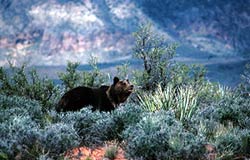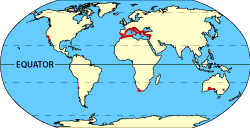Topic Overview: Chaparral
 The chaparral is also known as the Mediterranean shrubland. The chaparral has a warm, dry climate. Nearly all of the rain there falls during 2-4 months in the winter. There is very little rain during the rest of the year. The chaparral is also known as the Mediterranean shrubland. The chaparral has a warm, dry climate. Nearly all of the rain there falls during 2-4 months in the winter. There is very little rain during the rest of the year.
This biome is found in two areas of the world. One area is between 30 and 40 degrees north of the equator. The other area is between 30 and 40 degrees south of the equator. The chaparral is on the west coast of continents in these two areas. These continents include North America, South America, South Africa, and Australia. The chaparral is also along the coast of the Mediterranean Sea.

Most of the plants in the chaparral are shrubs. There are also some small trees. Many of the shrubs and trees in the chaparral are evergreens. That means they do not drop their leaves during part of each year. The leaves on these trees are thick like leather. The thick leaves help keep water in the plants. Some of the shrubs and trees have thorns. The thorns protect the plants from animals that might eat them. Live oak, eucalyptus, and sage are plants that grow in the chaparral. Many types of animals live in the chaparral biome too. Some of these animals include aardvarks, wallabies, rabbits, and a lot of different birds. Photo © 2000-2003 www.clipart.com |











